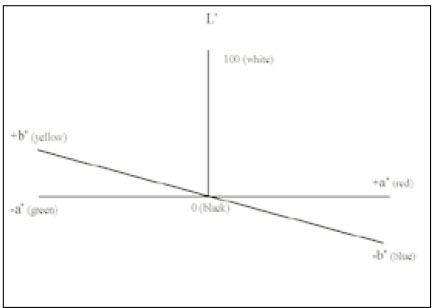References
1. Ruyter IE. Conversion in different depths of ultraviolet and visible light activated composite materials. Acta Odontol Scand 1982. 40179–182.
2. Shintani H, Inoue T, Yamaki M. Analysis of camphoroquinone invisible light cured composite resins. Dent Mater 1985. 1124–126.
3. Leung R, Fan P, Johnson W. Post-irradiation polymerization of visible light activated composite resin. J Dent Res 1983. 62363–365.
4. Friedman J. Care and maintenance of dental curing light. Dent Today 1991. 1040–41.
5. Carvalho RM, Pereira JC, Yoshiyama M, Pashley DH. A review of polymerization contraction: the incidence of stress development versus stress relief. Oper Dent 1996. 21(1)17–24.
6. Uno S, Asmussen E. Marginal adaptation of restorative resin polymerized at a reduced rate. Scand J Dent Res 1991. 99440–444.
7. Unterbrink GL, Muessner R. Influence of light intensity on two restorative systems. J Dent 1995. 23(3)183–189.
8. Mehl A, Hickel R, Kunzelmann KH. Physical properties and gap formation of light-cured composites with and without soft start-polymerization. J Dent 1997. 25(3)321–330.
9. Koran P, Kurschner R. Effect of sequential versus continuous irradiation of a light-cured resin composite on shrinkage, viscosity, adhesion and degree of polymerization. Am J Dent 1998. 11(1)17–22.
10. Peutzfeldt A, Sahafi A, Asmussen E. Characterization of resin composites polymerized with plasma arc curing units. Dent Mater 2000. 16(5)330–336.
11. Hanyang University Department of Physics. Plasma Application 2000. Laboratory;
12. Eldiwany M, Komatsu S, Powers JM. Curing light intensityaffects mechanicalproperties of composites. J Dent Res 1997. 7673.
13. Caughman WF, Caughman GB, Shiflett RA, et al. Correlation of cytotoxicity, filler loading and curing time of dental composites. Biomaterials 1991. 12737–740.
14. Seghi RR, Gritz MD, Kim J. Colorimetric changes in composites resulting fromvisible-light-initiated polymerization. Dent Mater 1990. 6133–137.
15. Brauer GM. Color changes of composites on exposure to various energy sources. Dent Mater 1988. 455–59.
16. Powers JM, Barakat MM, Ogura H. Color and optical properties of posteriorcomposites resin restoration. Dent Mater J 1985. 462–67.
17. Noie F, O'Keeefe KL, Powers JM. Color stability of resin cements after accelerated aging. Int J Prosthodont 1995. 851–55.
18. Swift EJ, Hammel SA, Lund PS. Colorimetric evaluation of vita shade resin composites. Int J Prosthodont 1994. 7356–361.
19. Asmussen E. An accelerated test for color stability of restorative resins. Acta Odontol Scand 1981. 39329–332.
20. Roh BD, Park SH, Lee CS. An experimental study of the degree of conversion and cytotoxicity of dual cure resin cements. J Korean Acad Conserv Dent 1995. 20(1)33–33.
21. DeWald JP, Ferracane JL. A comparison of four modes of evaluation depth of cure of light-activated composites. J Dent Res 1982. 66727–730.
22. Vargas MA, Cobb DS, Schmit JL. Polymerization of composite resins:Argon laser vs conventional light. Oper Dent 1998. 2387–93.
23. Sakaguchi RL, Sasik CT, Bunczak MA, Douglas WH. Strain gauge method for mearsuring polymerization contraction of composite restoratives. J Dent 1991. 19(5)312–326.
24. Goracci G, et al. Curing light intensity and marginal leakage of resin composite restorations. Quintessence Int 1996. 27(5)355–362.
25. Martin FE. A survey of the efficiency of visible light curing units. J Dent 1998. 26(3)239–243.
26. Rueggeberg FA, Craig RC. Correlation of parameters used to estimate monomer conversion in a lightcured composite. J Dent Res 1988. 67932–937.
27. Asmussen E. Restorative resins:hardness and strengthvsquality of remaining double bonds. Scand J Dent Res 1982. 90484–489.
28. Hansen EK. After-polymerization of visible light activated resins ; surface hardness vs light source. Scand J Dent Res 1983. 91406–410.
29. Backer J, Dermaut L, Bruynooghe W. The depth of polymerization of visible light-cured composite resins. Quintessence Int 1985. 10693–699.
30. Leung RL, Kahn RL, Fan PL. Comparison of depth of polymerization evaluation method for photoactivated composite. J Dent Res 1982. 61300. IADR Abstract # 1095.
31. Munksgaard EC, Peutzfeldt A, Asmussen E. Elution of TEGDMA and BisGMA from a resin and a resin composite cured with halogen or plasma light. Eur J Oral Sci 2000. 108(4)341–345.
32. Silikas N, Eliades G, Watts DC. Light intensity effects on resin-composite degree of conversion and shrinkage strain. Dent Mater 2000. 16(4)292–296.
33. Asmussen E. Factor affecting the color stability of restorative resins. Acta Odontol Scand 1983. 4111–18.
34. Um CM, Ruyter IE. Staining of resin-based veneering materials with coffee and tea. Quintessence Int 1991. 22377–386.
35. Ruyter IE, Svendsen SA. Remaining methacrylate groups in composite restorative materials. Acta Odontol Scand 1978. 3675–82.
36. Hayshi H, Maejima K, Kezuka K, Ogushi K, Kono A, Fusayama TT. In vitro study of discoloration of composite resins. J Prosthet Dent 1974. 3266–69.
37. Dodge WW, Dale RA, Colley RL, Duke ES. Comparison of wet and dry finishing of resin composites with aluminium oxide discs. Dent Mater 1991. 7(1)18–20.
38. Han WS, Kum KY, Lee CY. The influence of fluoride on remineralization of artificial dental caries. J Korean Dent Assoc 1977. 151009–1012.
39. Gross MD, Moser JB. A colorimetric study ofcoffeeandtea staining of four composite resins. J Oral Rehabil 1977. 4311–322.
40. Satou N, Khan AM, Mastsumae I, Satou J, Shintani H. In vitro color change of composite-based resins. Dent Mater 1989. 5384–389.
41. Wozniak WT, Muller TP, Silverman R, Moser JB. Photographic assessment of colour changes in cold and heat-cure resins. J Oral Rehabil 1981. 8333–339.
42. Raptis CN, Powers JM, Fan PL, Yu R. Staining of composite resins by cigarette smoke. J Oral Rehabil 1982. 9367–371.
43. Ruyter IE, Nilner K, Moller B. Color stability of dental composite resin materials for crown and bridge veneers. Dent Mater 1987. 13246–251.
44. Seghi RR, Jonston WM, O'Brien WJ. Performance assessment of colorimetric devices on dental porcelain. J Dent Res 1989. 681755–1759.
45. Dijken JWV. A clinical evaluation of anterior conventional microfilled and hybrid composite resin filling. Acta Odontol Scand 1986. 44357.
46. Kim CW, Lim BS, Moon HJ. Effect of Organic Solutions on the Surface Roughness and Color Stability of Dental Composite Resins. J Korea Res Soc Dent Mater 1999. 26(1)17–34.
47. Dietchi D, Campanile G, Holz J, Meyer JM. Comparison of the color stability of ten new-generation composites : An in vitro study. Dent Mater 1994. 10353–362.







